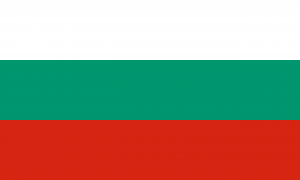Difference between revisions of "Language/Bulgarian/Grammar/DEMONSTRATIVE-PRONOUNS-–-Показателни-местоимения"
Jump to navigation
Jump to search
| Line 1: | Line 1: | ||
[[File:Bulgarian-Language-PolyglotClub.png|thumb]] | [[File:Bulgarian-Language-PolyglotClub.png|thumb]] | ||
<div style="font-size:300%"> DEMONSTRATIVE PRONOUNS – Показателни местоимения </div> | <div style="font-size:300%"> DEMONSTRATIVE PRONOUNS – Показателни местоимения </div> | ||
Demonstrative pronouns are in fact demonstrative adjectives (This, that, these). | |||
However, in sentence structures, demonstrative pronouns replace the noun phrase. | |||
==Gender and Number== | ==Gender and Number== | ||
Revision as of 20:59, 3 November 2021
DEMONSTRATIVE PRONOUNS – Показателни местоимения
Demonstrative pronouns are in fact demonstrative adjectives (This, that, these).
However, in sentence structures, demonstrative pronouns replace the noun phrase.
Gender and Number
Demonstrative pronouns in Bulgarian have gender and number.
Nearby persons and ojects
| Gender | Bulgarian | English |
|---|---|---|
| m. | този | this |
| f. | тази | |
| n. | това | |
| pl. | тези | these |
Distant persons and objects
| Gender | Distant persons and objects | Denoting quality |
|---|---|---|
| m. | онзи that | такъв such as |
| f. | онази that | такава such as |
| n. | онова that | такова such as |
| pl. | онези those | такива such |
Examples
| Той е такъв сноб! | He is such a snob! |
| Искам такава рокля. | I want such a dress. |
With or without a noun
We can use demonstrative pronouns with or without a noun. When used with a noun demonstrative pronouns go before it. The noun after the demonstrative pronoun is always without a definite article: този човек.
